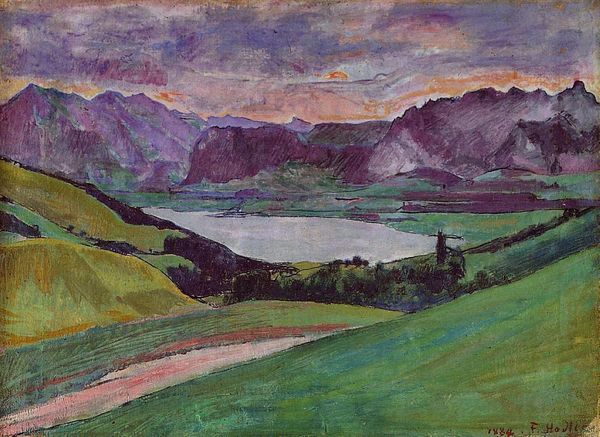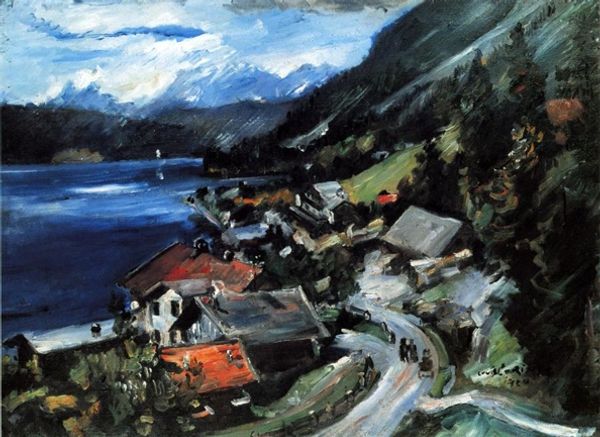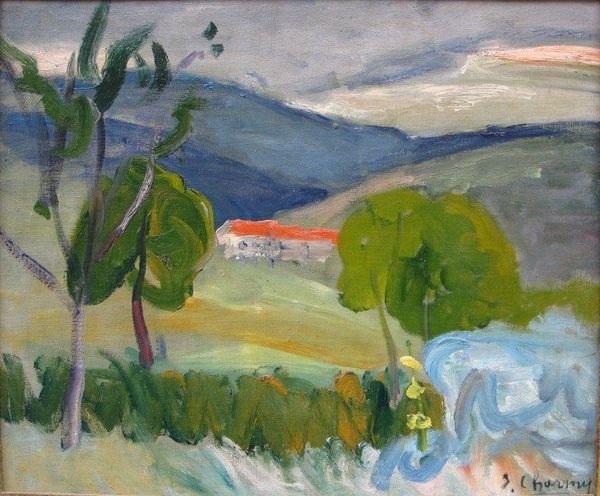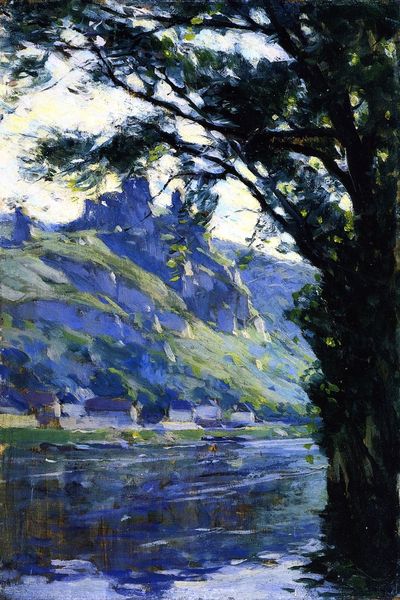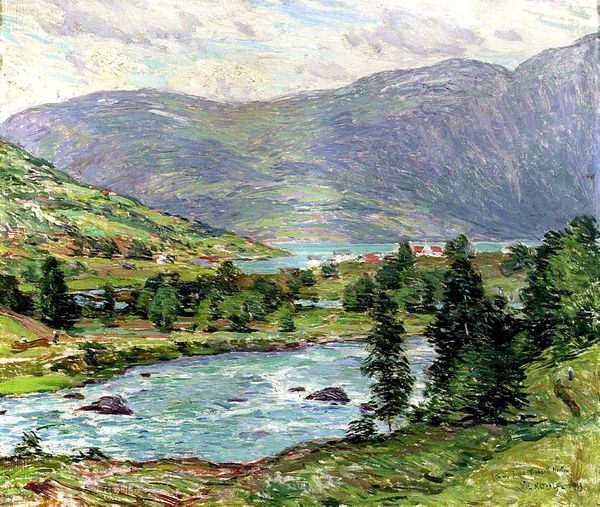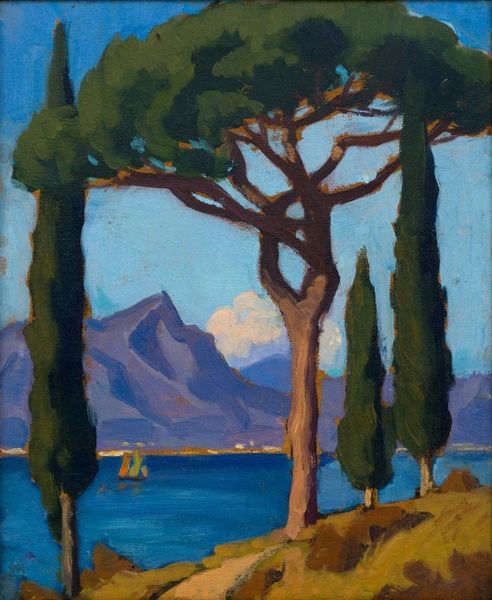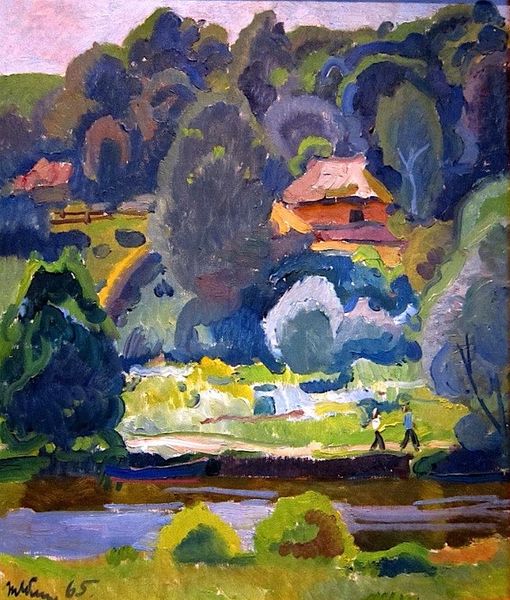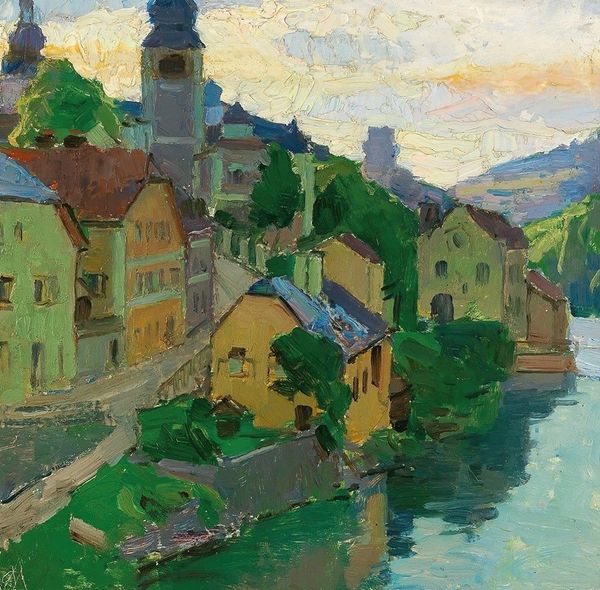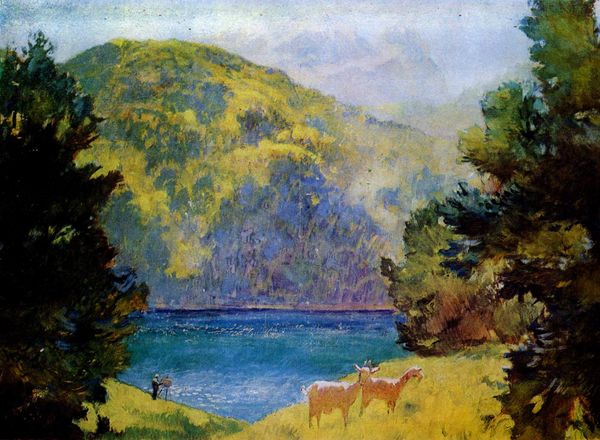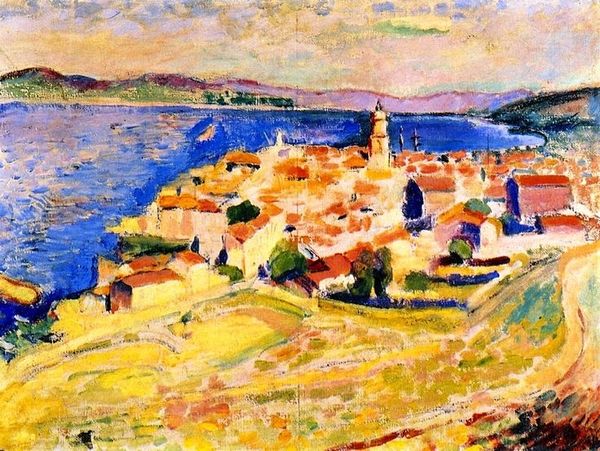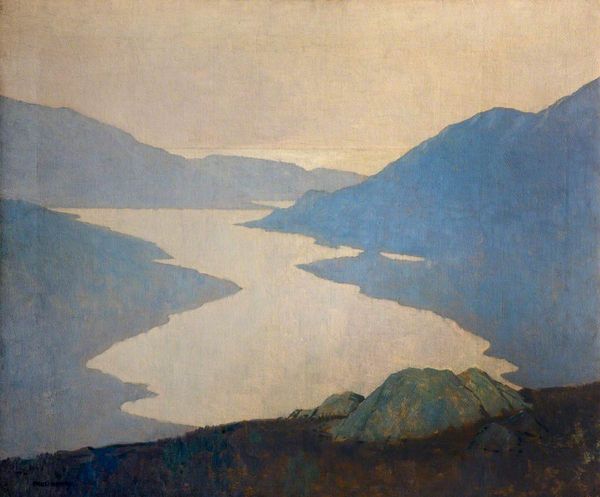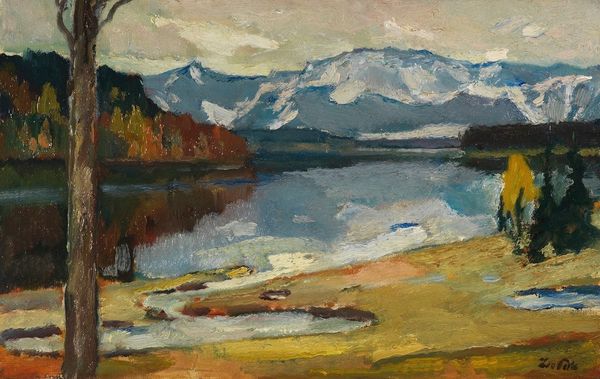
Copyright: Public domain US
Curator: We are looking at "The Lake, Annecy" painted by Arthur Beecher Carles in 1912, likely en plein air given its immediate and observational quality. Editor: Wow, there’s a real serenity to it, isn’t there? The blues are so dominant; it almost feels like you could dive right in, even with those slightly discordant greens holding things back on the shore. Curator: It's interesting you note the greens and blues, given the interplay Carles establishes between pure landscape observation and the influence of movements like Expressionism and Post-Impressionism at the time. Think about his mark-making and how the oil paint is applied. Editor: There’s something almost clumsy-beautiful about it, those thick, blocky strokes give it this determined awkwardness. I can almost feel the canvas vibrating. You mentioned ‘en plein air’…it feels immediate but definitely worked. He probably layered. Curator: Indeed, this piece exemplifies Carles' exploration of color theory, heavily inspired by artists like Matisse and Cézanne. His departure from strictly representational painting points toward abstraction. The visible brushstrokes suggest not only the material quality of paint itself but also the labor involved. How he applied and manipulated each brushstroke, is as significant as what he depicts. Editor: The clouds! They're these faint lilac puffs... I can't tell if the mountains in the background are fading, dissolving, or if they are being born fresh on the canvas in that moment. I mean look at those houses and the field–that area feels grounded, compared to everything dissolving in the background. It gives this nice dynamic tension...this real grounded-ness offset by real float-y ness. Curator: Your focus on groundedness is apt. The lower portion functions to showcase the material effects, emphasizing formal construction of color and shape more so than representational form, highlighting tensions between place and painterly technique. Editor: Okay, I'm seeing the scaffolding now! And it looks like the application creates the place. Curator: Precisely. Consider how the marketplace for art valued landscape paintings like this; consumption also factored into these processes of aesthetic production. Editor: What a great trip into a little corner of painterly experience—made very solid and liquid at the same time. Thanks! Curator: Thank you. This exploration underscores the complex relationships at play between environment, process and commerce.
Comments
No comments
Be the first to comment and join the conversation on the ultimate creative platform.
